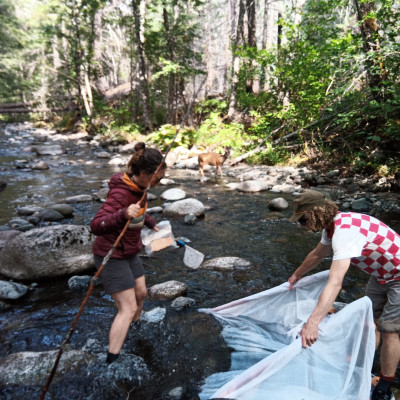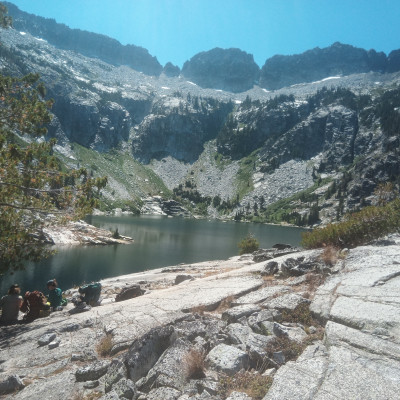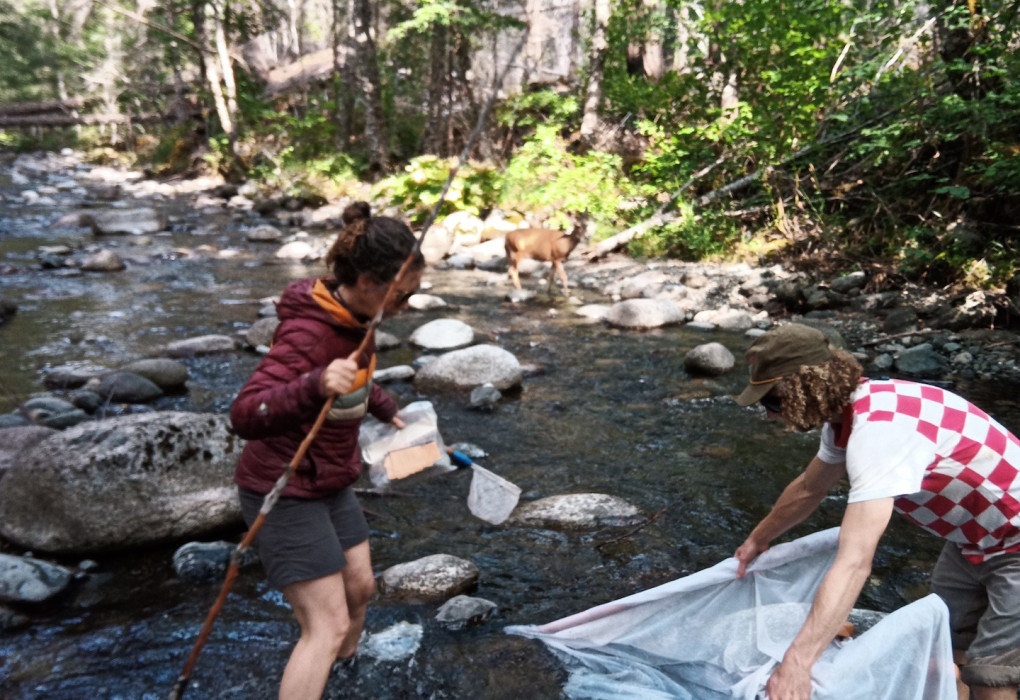StEELhead Discoveries Series - Part 4
*This is Part 4 of an ongoing series on the campaign to Free the Eel and efforts to better understand and revive the iconic steelhead in the Pacific Northwest by Native Fish Society Fellow Samantha Kannry. View all parts of the series HERE. Additional parts and updates will be posted over the next several months. Stay tuned!
~ ~ ~ ~ ~ ~
"Our exploration of the mid-Klamath is on hold for this summer. Thunderstorms brought lightning strikes across Northern California and Southern Oregon on August 14th. Sitting by a small fire in my garden on the coast that evening, the lightning put on a remarkable show. We rarely get to see lightning so near the ocean, and it always has a magical feel to it. However, the reality of what that amount of lightning means, in the middle of August in California, is very different. The strikes ignited numerous fires across the region. The fires range in size from just a few acres to tens of thousands of acres, burning through tributaries of Redwood Creek, the Mad River, Trinity River, Klamath River, Scott River, Salmon River, Smith River, and Illinois River. They have forced closures of wilderness areas, campgrounds, roads and highways, and are threatening hundreds of people’s homes and livelihoods.
There is some part of our ego-driven brains that when hearing of a situation like this, thinks of the inconvenience to ourselves and our plans. We quickly shift those thoughts to consideration of all the people, fish, trees, and countless other creatures that are running for their lives and losing their homes. The mid-Klamath and all her amazing tributaries will be there next summer to explore, and we have other watersheds to cover. When the rains return in the fall and the fires are all put to rest, we will learn many things. Some of these fires will have eliminated every bit of vegetation across most or all of their footprint. Others, however, will have crept around, removing the understory and smaller trees, and resulting in a healthier, more fire-resistant landscape. A century of forest mismanagement and fire suppression have led us to a place where lightning in the summer is a threat. Many people, particularly tribes and other folks in the Klamath watershed are working to change this, through training people to use fire, conducting prescribed burns and working to change the narrative around fire in our culture.
Since we were unable to venture into the mid-Klamath, we moved south into a few tributaries to the Trinity River. We are continuing to investigate the distribution of fall, summer and winter-run steelhead around barriers, as well as the distribution of resident and anadromous type fish, through our sampling efforts. We found the same abundance of juvenile O. mykiss that we saw in the Klamath, as well as complex barriers and lovely sub-alpine source lakes. Our next few sampling trips will likely take us to other parts of the Trinity River, Eel River and Rogue River, and then back to the Klamath next summer."
-Samantha Kannry


~~~~~
About the Author:
Samantha Kannry has been monitoring, studying, and swimming with summer-run steelhead in the Eel River and other rivers of Northwestern California for the past thirteen years. She joined NFS as a volunteer in 2015, then became a fish genetics fellow in 2020.
While it has been clear to the native peoples of the region since time immemorial that summer-run steelhead and the congeneric spring Chinook are separate populations, not everyone else sees it so clearly. Her research has focused on using conservation genetic tools to elucidate the distinction between summer and winter-run steelhead.
When not minking (a combination of hiking, swimming, snorkeling, sliding, shimmying, and boulder jumping) down rivers, she is usually growing and eating fruit, moving manure at Caudal Fin Farm, or bike touring distances large and small. All working towards re-establishing the inherent continuity between rivers, land, and people.
Read StEELhead Discoveries Part 1 - 3 HERE.
